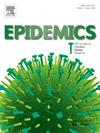使用成本-效果分析优化按年龄分配流感疫苗:比利时6720例儿童和成人疫苗接种方案的比较
IF 2.4
3区 医学
Q2 INFECTIOUS DISEASES
引用次数: 0
摘要
背景:许多欧洲国家根据严重疾病和死亡风险确定每年流感疫苗接种的优先群体。这使得比利时老年人的流感疫苗接种覆盖率相对较高。然而,年轻人的覆盖率要低得多,儿童的覆盖率可以忽略不计。众所周知,儿童和年轻人在流感的传播动态中发挥着重要作用。因此,一个重要的政策问题是,在考虑到间接影响的情况下,如何在各年龄组之间最佳地分配流感疫苗。方法采用动态传播模型再现比利时的流感季节性,比较6720种相互排斥的疫苗接种方案,包括目前的做法。疫苗接种方案由9个年龄组的不同覆盖水平变化组合来定义。我们从医疗保健支付者的角度对所有选择进行了经济评估。质量调整生命年(QALYs)是主要健康结局。我们使用增量净货币效益(INMB)方法来表达参数不确定性。结果在考虑的所有疫苗接种方案中,超过90% %的疫苗接种策略在成本效益方面占主导地位。据估计,儿童对整个人口起到了相当大的间接保护作用。最具成本效益的规划将儿童的疫苗接种率提高到90% %,50-64岁提高到48% %,65-74岁提高到75% %。通过在儿童年龄组中实现高疫苗接种覆盖率,季节性流感疫苗接种规划可以可接受的成本最大限度地提高总体质量aly收益。在比利时的情况下,对这种执行的方案和伦理问题需要分别加以考虑。本文章由计算机程序翻译,如有差异,请以英文原文为准。
Optimizing influenza vaccine allocation by age using cost-effectiveness analysis: A comparison of 6720 vaccination program scenarios in children and adults in Belgium
Background
Many European countries prioritize groups for annual influenza vaccination based on risk of severe disease and death. This has resulted in relatively high influenza vaccination coverage in older adults in Belgium. However, coverage is much lower in younger adults and negligible in children. Children and young adults are known to play a major role in the transmission dynamics of influenza. Thus, an important policy question is how influenza vaccines can be optimally allocated across age groups, taking indirect effects into account.
Methods
We adapted a dynamic transmission model to reproduce influenza seasonality in Belgium comparing 6720 mutually exclusive vaccination options, including current practice. Vaccination options were defined by different combinations of coverage level changes in nine age groups. We performed an economic evaluation comparing all options from a healthcare payer perspective. Quality-adjusted life-years (QALYs) were the primary health outcome. We expressed parametric uncertainty using the Incremental Net Monetary Benefits (INMB) approach.
Results
Of all the vaccination options considered, over 90 % dominated the current Belgian vaccination strategy in terms of cost-effectiveness. Children were estimated to contribute a substantial indirect protective effect to the overall population. The most cost-effective program increases vaccination coverage rates for children to 90 %, 50–64 years old to 48 %, and 65–74 years old to 75 %.
Discussion
Overall QALY gains can be maximized in seasonal influenza vaccination programs at acceptable costs by achieving high vaccination coverage in childhood age groups. Programmatic and ethical concerns towards such an implementation in the Belgian context need to be separately considered.
求助全文
通过发布文献求助,成功后即可免费获取论文全文。
去求助
来源期刊

Epidemics
INFECTIOUS DISEASES-
CiteScore
6.00
自引率
7.90%
发文量
92
审稿时长
140 days
期刊介绍:
Epidemics publishes papers on infectious disease dynamics in the broadest sense. Its scope covers both within-host dynamics of infectious agents and dynamics at the population level, particularly the interaction between the two. Areas of emphasis include: spread, transmission, persistence, implications and population dynamics of infectious diseases; population and public health as well as policy aspects of control and prevention; dynamics at the individual level; interaction with the environment, ecology and evolution of infectious diseases, as well as population genetics of infectious agents.
 求助内容:
求助内容: 应助结果提醒方式:
应助结果提醒方式:


